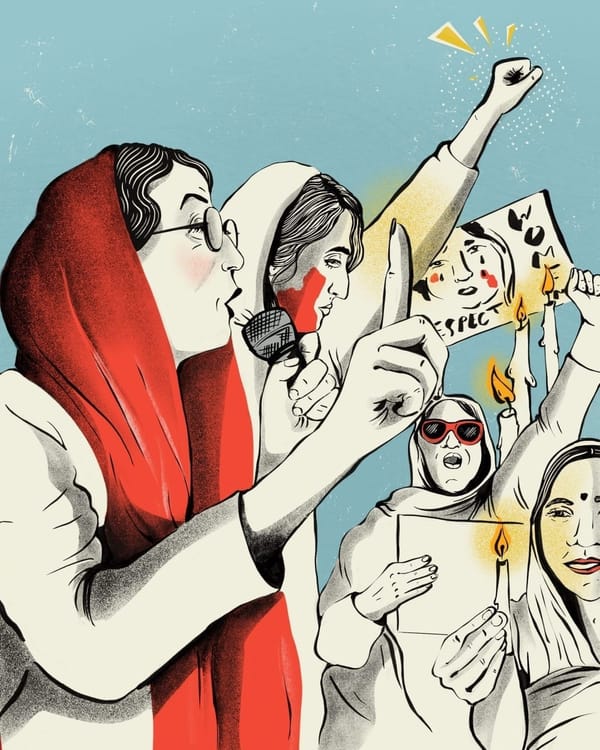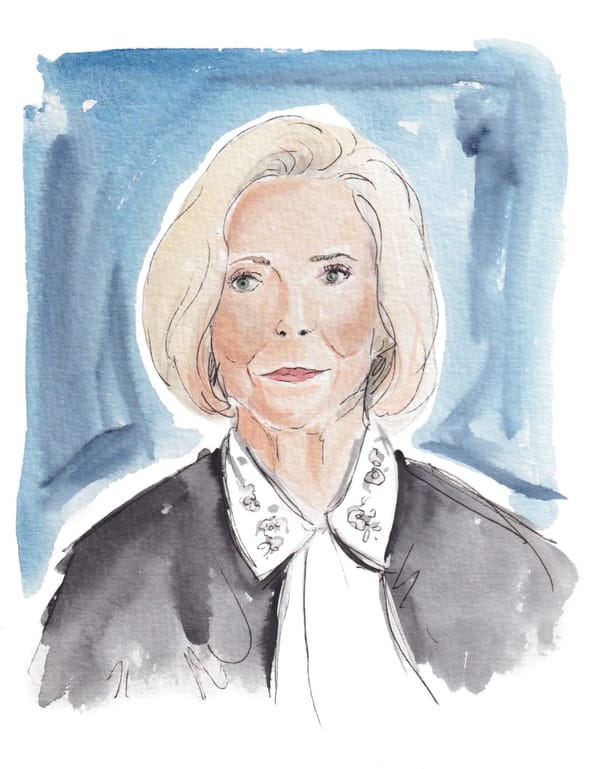Better Jobs Numbers for Women Is a Good Thing. There’s Just One Wrinkle.
New figures show the number of women with kids in paid work is at a record high. But unabashedly rejoicing misses half the picture.

Congratulations, mothers of America. Earlier this month official statistics showed that maternal labor force participation had not only topped pre-pandemic levels, but had also hit its highest level ever: Almost 72 percent of mothers across the U.S., with children under 18, are now in paid work.
In many ways, this is remarkable. In the early days of Covid-19, as daycare facilities and schools shut down, the proportion of mothers in the U.S. workforce tumbled by close to 16 percent, prompting news outlets to question whether the U.S. was returning to the 1950s. The picture was similarly dire in other countries around the world.
It didn’t end there. Some academics suggested that it would be difficult for those women who had dropped out of the workforce to re-enter it—that the pandemic would have “long-term implications for women’s employment,” exacerbating the gender pay gap and cementing age-old social norms. And yet, just over four years later, here we are. The share of employed mothers is about 1.9 percent higher now than it was in February 2020, before the world shut down.
Closing the gender labor force participation gap is an important precursor to closing other stubborn gender gaps like the authority gap and of, of course, the pay gap. It may also be a sign that workplaces are becoming more attuned to the specific needs of women; that bosses—whisper it!—are actually considering what their workers want and need in order to be able to do their jobs. Indeed, there’s evidence that remote and hybrid work arrangements can help mothers reach their professional potential while simultaneously raising kids, which is, of course, good for everyone (regardless of gender or parental status.)
But…unabashedly rejoicing means missing half the picture.
When I sifted through the latest labor force participation data, I couldn’t help but think of an academic paper I read in 2022, authored by the Nobel Prize-winning economist Claudia Goldin. In it, Goldin breaks down labor market trends that unfolded during and after the onset of the pandemic, busting some myths and cutting through the hyperbole. Yes, female labor force participation did fall during the pandemic, propelled in no small part by women who could afford to step back to focus fully on childcare. But you know what else happened? Countless mothers and other women caregivers who remained in their jobs, became “stressed, frustrated, and anxious” because they were stretched to near-breaking point as they tended to unpaid work—keeping their families safe and educated.
While more U.S. mothers are in the paid labor market than ever before, it doesn’t mean they’re doing less of the unpaid labor.
True, we’re no longer in the thick of a global pandemic, but the point Goldin makes is worth remembering. While more U.S. mothers are in the paid labor market than ever before, it doesn’t mean they’re doing less of the unpaid labor. In other words, women are still doing more of the grunt work around the home—think washing dishes, packing lunches, and yes, picking up socks—than their male counterparts. It also doesn’t mean that, in heterosexual relationships, women's partners are picking up more of that housework and caregiving.
In fact, last year data crunched by the Pew Research Center found that although the proportion of women who earn as much as, or significantly more, than their husbands had almost tripled over the past half a century, women were still doing more household chores and caregiving work than men.
“This is true in egalitarian marriages—where both spouses earn roughly the same amount of money—and in marriages where the wife is the primary earner,” the researchers wrote. “The only marriage type where husbands devote more time to caregiving than their wives is one in which the wife is the sole breadwinner.” In those marriages, the researchers added, wives and husbands spend approximately the same amount of time per week on household chores. (Though, interestingly, research shows that the amount of unpaid labor you think you do tends to vary by gender.)
Government data also show that in heterosexual marriages in which both parents work, women are far more likely to be the ones who juggles the curveball of a sick child or a childcare hitch. The mental burden of that cognitive load, well, that’s a story for another day.
I don’t want to sound cynical. By all means, let’s celebrate this latest milestone in the collective fight for economic equality, but as we praise the women who are navigating broken rungs, or smashing glass ceilings, or outsmarting glass cliffs, or just hustling like mad to prevent everything from coming apart at the seams, let's not forget to ask the perennially important question: At what cost?
Closing the gender gaps in the paid labor market is critical. But until we close the gaps in the unpaid labor market, our work is quite simply, unfinished.
Josie Cox is a journalist, author, broadcaster and public speaker. Her book, “WOMEN MONEY POWER: The Rise and Fall of Economic Equality,” was released in March.





